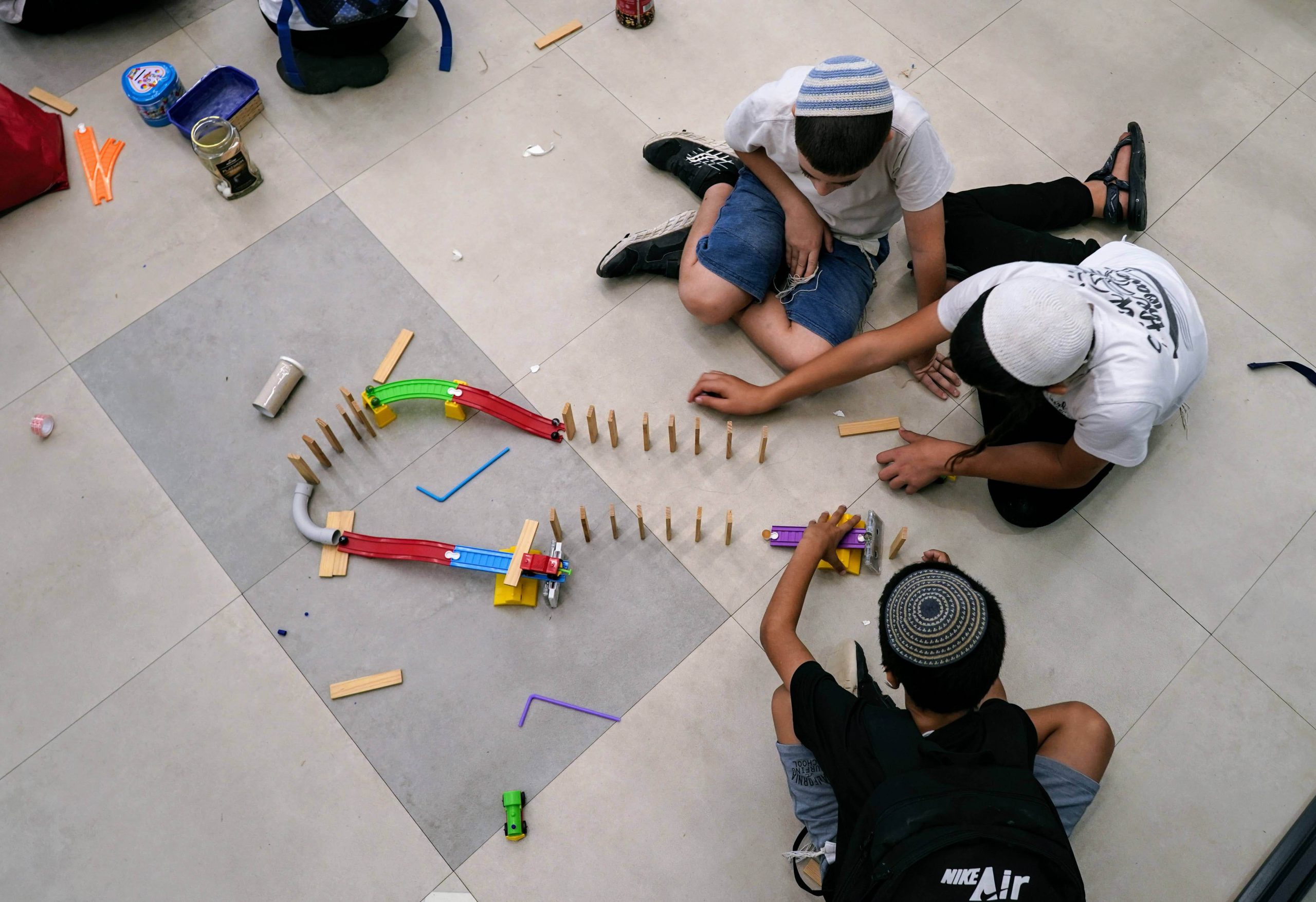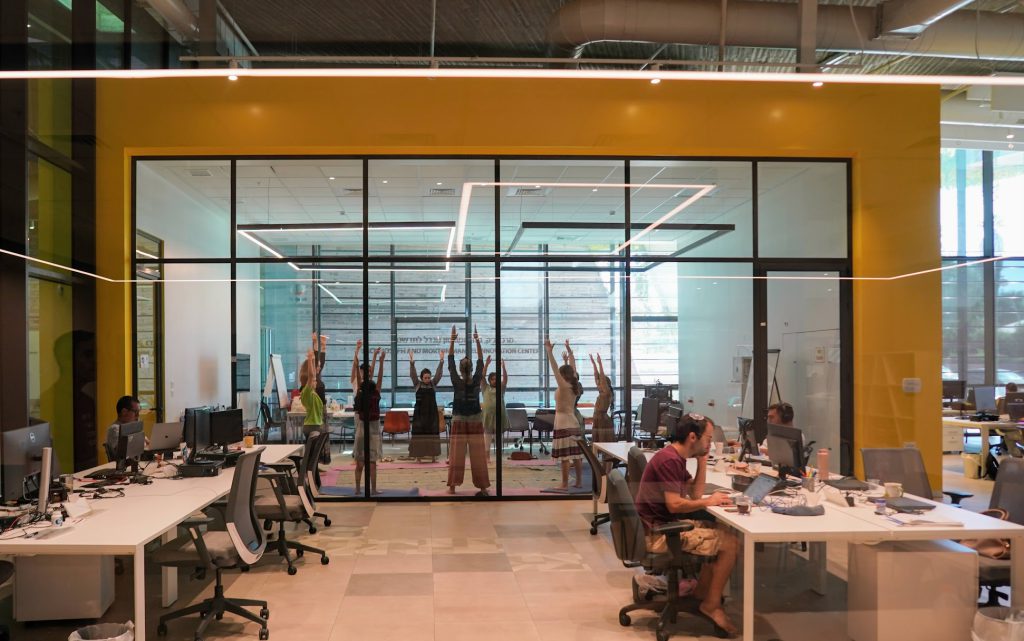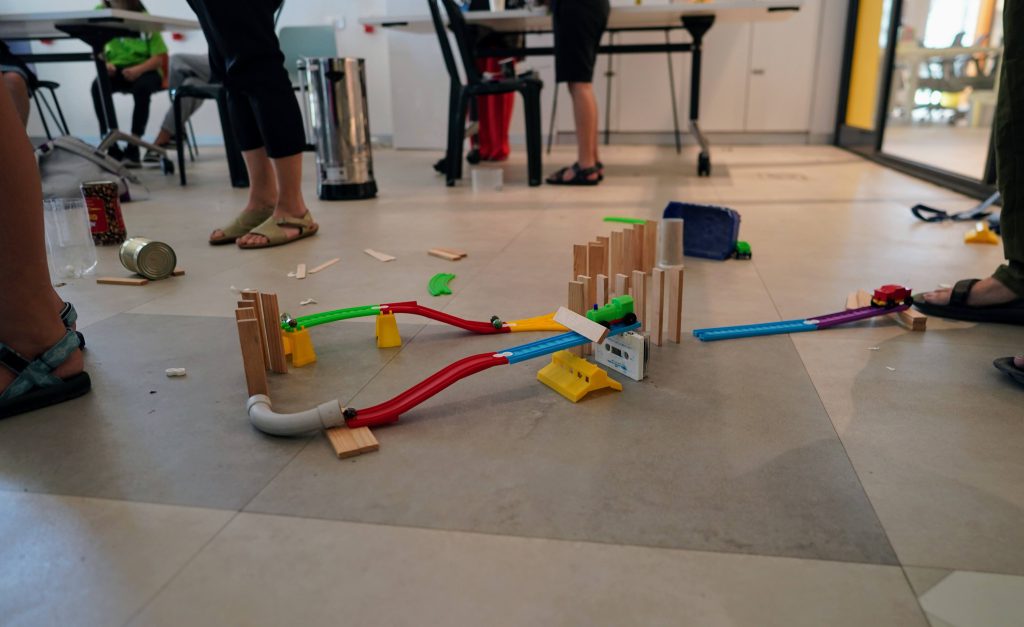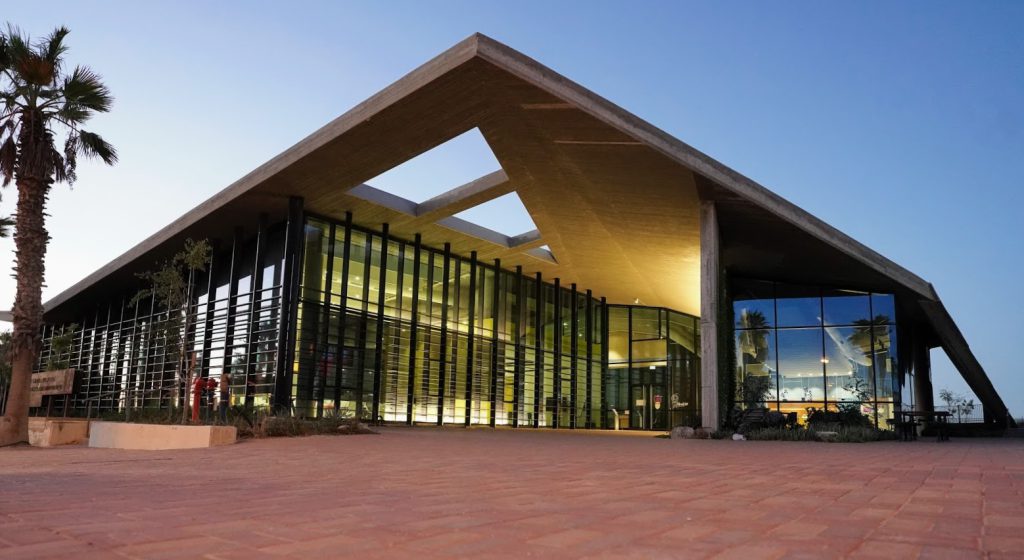“Like in life, in the Rube Goldberg Machine action leads to action”
SPRINT - MindCET's answer to independent learning in times of emergency

How do you develop a quick response for students and teachers in times of national emergency?
During this complex period, school learning takes place in different and varied forms – either from home or school, in a combination of both, or in emergency schools far from home, friends, and family. The availability of students, parents, and teachers to learn in each of these options is accompanied by a cycle of difficulties that sometimes do not allow much more than basic survival. In light of these aspects of learning under conditions of national emergency, MindCET developed a platform called SPRINT, designed to respond to learning under extreme circumstances—with minimal additional effort from the teachers but with significant learning for the students.

A different soundtrack: children laughing, singing, and learning
SPRINT is a platform for developing independent learning skills out of interest and curiosity. The platform has a selection of learning tracks on diverse subjects that are not part of the regular curriculum taught in classrooms, and that develop the skills of the future through a connection to the students’ worlds. Each track lasts for a fixed five-day stretch, each day for 90 minutes—with the last day dedicated to the presentation of products by the children.
“I learned that hard work leads to cool products.”
We chose to hold the first SPRINT pilot in an emergency school established in the MindCET complex in Yerucham. The participating school is an elementary school—grades 1-6—with over 80 children from Gaza Envelope who left their homes with their families. The sound of children filling the high-tech space, where quite a few people were working quietly in front of their computers, took some getting used to, but in this period, there is no soundtrack more pleasant than children laughing, singing, and learning.
“I did the track for chain operations. The construction part was successful. I enjoyed the construction itself more, less than working on the computer. I was challenged by the repeated attempts and I was happy when the machine worked.”

Students and teachers as product managers
For the pilot, we gathered 22 children in grades 5-6.
On the first day, I told the children that they now had a very important task—they are the first to use a new product, and their feedback will influence what children throughout the State of Israel would learn. Everyone’s eyes lit up, and they were immediately engaged in the task.
At first, the children were excited to receive a personal computer, but they were a little disappointed when they discovered that they were not playing, but learning, and in a way that requires deep thought, creativity, and above all, coping with a slightly different type of learning.
The track we started with was “Building a Rube Goldberg Machine.”
The first step was understanding the topic, getting to know the structure of the week, and learning the method of working on the platform. Later, they planned, organized, built, shared, sat down, and mostly tried, made mistakes, tried some more, and failed some more. At the end of the day, after all the trial and error, when their machines started working—we couldn’t get them to stop building (nor to go home).
“I did the Rube Goldberg track that dealt with the topic of chain reactions. In the track, I learned about gravity, about chain reactions… I liked the videos the most in the program. It challenged me to look for the objects I needed to build my track, and I was happy when I finished successfully. All in all, I had fun.”
Every day, when the children saw me in the hallway, they asked about their machine, about SPRINT, and that they had an idea on how to improve the machine. On the last day of the track, we celebrated the success but mostly everything that preceded it: the persistence but also the giving up, the falls but also the process of learning what to do to improve our work methods and process, the reluctance to share ideas so they wouldn’t be laughed at but also how teamwork improved the process and product.
As Evyatar, a 10-year-old from Sderot, said:
“I learned that, likein life, in the Rube Goldberg machine action leads to action.”


